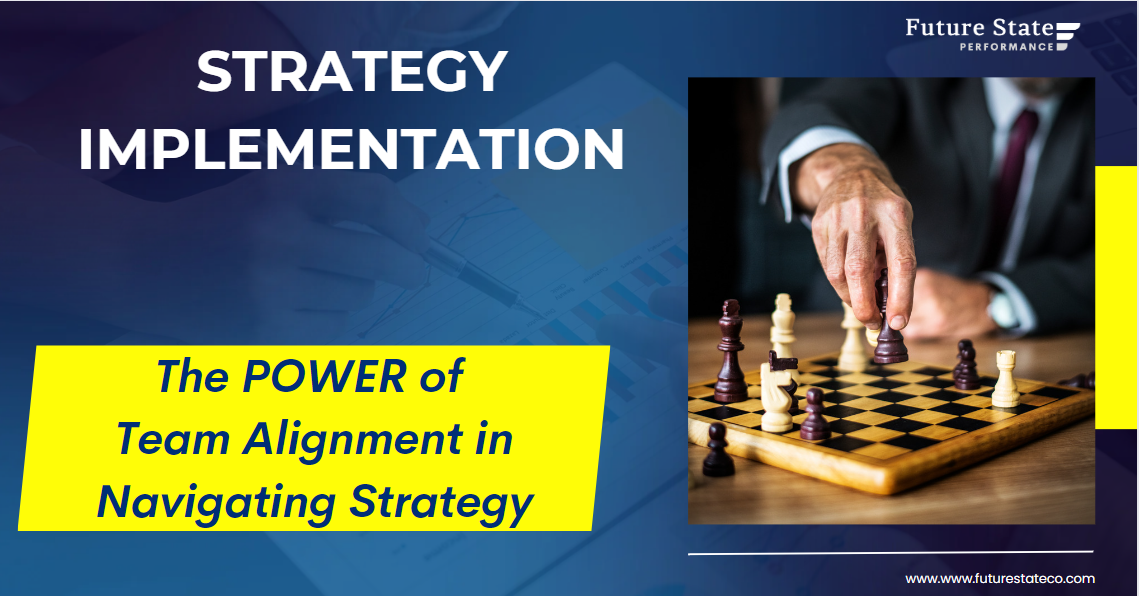Embarking on a strategic journey without bringing your teams along is like setting sail without a crew—unlikely to reach the destination smoothly.
You can’t build a successful strategy without your people. It’s about building strong relationships that, on both sides, give and take.
As a leader, you must lead your teams along this journey and to accomplish this successfully, there are some crucial considerations.
Accountability:
In a cohesive team, each member understands their role in executing the strategy. Accountability ensures everyone pulls their weight, contributing to the collective success.
When individuals take ownership of their responsibilities, it enhances transparency, minimises finger-pointing, and promotes a sense of reliability, crucial for meeting strategic objectives.
Consequence of Neglect:
This aspect can lead to confusion, missed deadlines, and a lack of ownership.
Making it a Team Thing:
An often overlooked metric when it comes to business performance is fulfilment.
Businesses are great at measuring targets, throughputs etc
But do they measure fulfilment?
Both metrics are intrinsically linked.
A shared vision promotes a sense of unity and shared purpose. When the strategy becomes a team effort, employees are more likely to collaborate, share insights, and actively contribute.
This collaborative spirit is crucial in the breaking down of exiting silos, encouraging open communication and collective problem-solving, an essential for overcoming challenges and achieving strategic milestones.
Consequence of Neglect:
Ignoring fulfilment can result in teams not being appreciated, thus hindering communication and collaboration. And the consequence of this will be individuals leaving, or even worse, stay and leave, that is cut back on contribution.
They Must Win Too:
It has to be a team thing. Teams that are brought in on strategy development will actively engage with strategy deployment.
They know their role is acknowledged and plays a part in the strategy success.
Individual and team successes are intertwined. Acknowledging and celebrating team achievements paves the way for a positive & progressive culture.
To consolidate this, well designed recognition programmes reinforces a sense of value, boosts morale, and inspires continuous effort.
Consequence of Neglect:
When you tell teams to do something, what motivation do you give them? Dictating a strategy will lead to demotivation, a lack of morale, and a sense of detachment.
Customer Engagement:
This maybe a surprise inclusion, however your customers are an instrumental component of your strategy.
As mentioned above, including people inspires growth. When it comes to including your customers, it inspires continued and successful relationships.
Aligning teams with customer-centric strategies ensures a better understanding of customer needs. Employees who grasp the importance of customer engagement become more attuned to market dynamics, leading to more informed decisions.
One caveat here is to be mindful of creating a customer experience pillar at the expense of the employee experience.
Consequence of Neglect:
Neglecting this can result in disconnected efforts, impacting the ability to meet customer expectations and, ultimately, satisfaction.
Incentives & Rewards:
Recognising and rewarding team efforts motivates individuals to go above and beyond. A well-designed incentive system not only acknowledges hard work but also reinforces desired behaviours.
This also is inclusive of the fulfilment element mentioned above. People not only need to feel appreciated, but also know that their contributions are important in the overall development. Again it’s a team thing.
Consequence of Neglect:
Ignoring this aspect may lead to decreased motivation, diminished commitment, and a potential talent drain.
Skills & Capabilities – Teaching Teams to do new Things:
To do new things, there is a requirement for new capabilities and adapting to change often requires acquiring new skills.
Teams must be provided with the tools and training necessary for successful implementation. This not only empowers employees but also nurtures a culture of learning and innovation.
Continuous development ensures teams will be equipped for evolving challenges.
A workforce with up-to-date skills is more adaptable and resilient, capable of navigating changes in the business landscape.
This also plays a crucial role in retaining top talent, a major challenge to overcome in this new world.
Consequence of Neglect:
Ignoring skill enhancement can result in teams struggling to meet new demands, hindering strategy execution along with leading to continued resistance to change.
This will also put loyalty into question.
Resource Allocation:
Effective allocation ensures that teams have the necessary resources to execute the strategy. Proper resource allocation streamlines workflows, minimises bottlenecks, and allows teams to work effectively.
Teams must be given adequate capacity to work on new initiatives and NOT be added to an already intensive workload.
Consequence of Neglect:
Neglecting this aspect may result in bottlenecks, inefficiencies, and missed opportunities. The consequence of this will lead to sub standard deployment process.
In conclusion
The consequences of not prioritising team alignment in your strategy journey are severe—disarray, disengagement, potential failure. Top talent will leave, or worse, stay and leave, that is cut back on contribution.
Organisations thrive when every team member understands their role, shares a common purpose, and feels valued in the pursuit of strategic goals. 🌐💼
_______________________
Join the conversation: How do you best include your teams with strategy implementation?
_______________________
#TeamAlignment #StrategicJourney #BusinessSuccess #LeadershipImpact
Summary
📚Strategy Implementation: The POWER of Team Alignment in Navigating Strategy
This is my latest article that reviews the critical role of team alignment in navigating the complex landscape of strategy implementation.
Highlights include a breakdown of
⏩Accountability
⏩Shared vision
⏩Customer engagement, and
⏩Resource allocation
….among other factor
The article emphasises the importance of nurturing cohesion within teams. Neglecting this aspect can lead to disarray, disengagement, and potential failure.
Top talent could leave, or even worse, stay and leave, that is cut back on contribution.
Prioritising team alignment facilitates smoother execution and enhances the likelihood of achieving strategic goals.
https://www.linkedin.com/posts/shaylynchbusinessarchitect_teamalignment-strategicjourney-businesssuccess-activity-7160906192830021632-7pHM?


